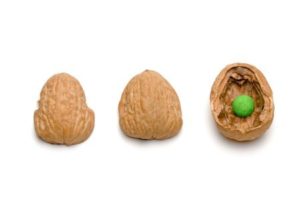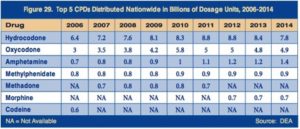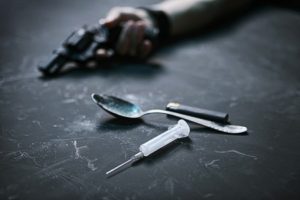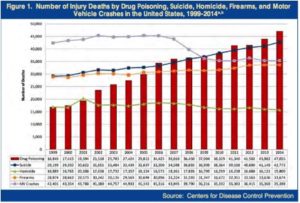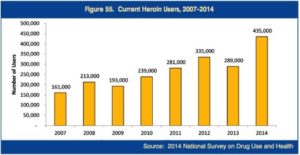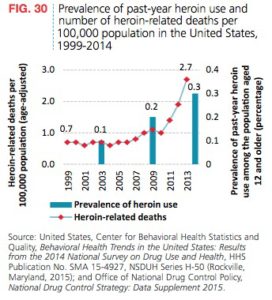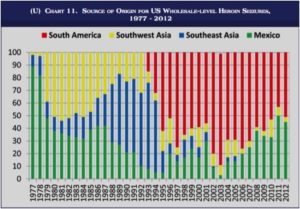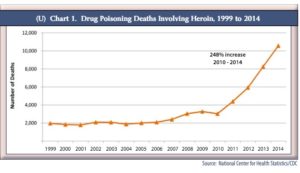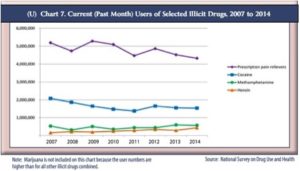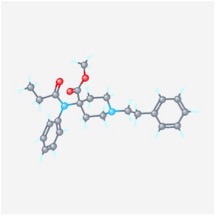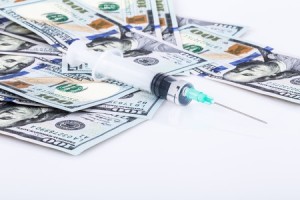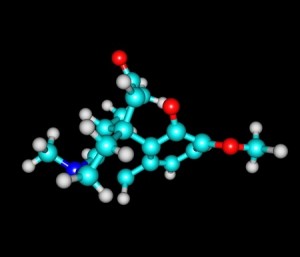In Search of Functional Heroin Use
In the midst of the so-called “opioid epidemic,” there are a couple of notable examples of individuals who “came out” as recreational heroin users. Both insisted personal relief that they could now live honestly after their admission. And both emphasized that their drug-use was not a problem. One individual is an author and artist, the other person is a tenured neuroscientist and professor of psychology. Both say they practice functional heroin use.
M. L. Lanzillotta is a twenty-something author and artist who first identified herself as a functional heroin user in, “I Chose Functional Heroin Use.” She said that abstinence from heroin didn’t work for her. She didn’t connect with 12 Step groups, saying that she argued with her sponsor and was “too scientifically-minded to believe in a Higher Power.” Maintenance drugs like methadone and buprenorphine didn’t work for her. She then realized she would be happier and healthier if she used, so she stopped trying to force herself to be sober.
That’s why, at age 19 and after more than a year of trying to quit, I stopped trying to force myself to be sober. Instead, I decided to focus on staying as healthy and stable as possible whilst continuing to inject heroin. I’m now 20. So far my plan has worked. People may choose to dismiss my story because of my age, but most drug use, of any kind, is non-problematic. In my case, I don’t just use heroin for fun. It serves a purpose.
She felt free when using. It made her tired in a cheerful way, and took away worry. In hindsight, she sees that she was physically dependent after two months. “And if I hadn’t used on a daily basis for that initial period, I might not’ve gotten stuck.” Initially she smoked heroin and found it protected her from toxic “friends” and other problems. But she also stopped having meltdowns and no longer wanted to die.
Lanzillotta said you can’t let heroin become your wife, life and everything. “Letting your life revolve around any one thing isn’t healthy.” She admitted she is dependent on diacetylmorphine, but doesn’t let it run her life. She doesn’t recommend unprescribed opioid use to anyone, but she’s learned to live with using heroin in a way that makes sense to her.
Nineteen months later, on December 28, 2020, she wrote, “What It’s Like to Be ‘Out’ as a Person Who Uses Heroin.” She wrote about her heroin use because she figured being totally honest about her drug use might help other functional addicts. In defying the stereotypes by working for her drug money and telling the truth, she hoped to make it harder for others to shun or mock her. “I wanted to be living proof that drug users can be good, caring, moral, responsible people.” Her vlogs on YouTube about her heroin use slowly garnered a few hundred views.
The worst thing that happened in connection with my being open about my drug use in my general life was in a work situation, when an older man in a position of power harassed me, exploited me and ultimately sexually assaulted me. He used the offer of giving me drugs (fake drugs, it turned out) to manipulate me, and demeaned me as a “junkie,” among other things. I am certain that knowing I was a drug user made him feel empowered to do those things to me. When I tried to tell HR about what had happened, they refused to believe me—because, I’m sure, I was a known, “out” drug user.
She has roughly ten or 12 YouTube videos on drug use, like “Why I Believe All Drugs Should Be Legal and Regulated, Part 1,” where she said: Opioids aren’t the problem! … prohibition is!” Or “Drugs Don’t Make Celebrities Racist/Sexist/Etc.,” where she said drugs don’t make you a bad person. Interestingly, in “Drug Use Isn’t Inherently Problematic,” she commented that she wasn’t using heroin right then, but may return to using it. Something seems to have changed with her since stating, “Opioids made me truly happy for the first time in my life,” in “I Chose Functional Heroin Use.” I wonder if it had started to become her wife, life and everything.
The Pursuit of Happiness?
Carl Hart is a professor of Psychology at Columbia University. His general area of research is in the behavioral and neuropharmacological effects of psychoactive drugs in humans. Currently his lab is trying to understand factors that mediate drug self-administration and then develop effective treatment methods from that knowledge. His recently published book, Drug Use for Grown Ups, hoped to present a more realistic image of the typical drug user as “a responsible professional who happens to use drugs in his pursuit of happiness.”
In an article for The Guardian, he said he can now live more honestly. “I can look in the mirror. My children can have an example of what courage looks like in real time, not in history.” He admitted he could catch some flack from his employers at Columbia. But “such is life.” He thought the evidence and his public record in the book would exonerate him. He thinks the harm that drugs do has been wildly overstated. In the Prologue to Drug Use for Grown Ups, he said:
I am an unapologetic drug user. I take drugs as part of my pursuit of happiness, and they work. I am a happier and better person because of them. I am also a scientist and a professor of psychology specializing in neuroscience at Columbia University, known for my work on drug abuse and addiction. It has taken me more than two decades to come out of the closet about my personal drug use. Simply put, I have been a coward.
Hart then cited the philosopher John Locke, who once noted that pursuing happiness was “the foundation of liberty.” He said this idea was at the core of the Declaration of Independence, which asserts that we are endowed with certain unalienable rights, including “Life, Liberty and the pursuit of Happiness.” As an aside, the Declaration of Independence actually reads, “We hold these truths to be self-evident, that all men are created equal, that they are endowed by their Creator with certain unalienable Rights, that among these are Life, Liberty and the pursuit of Happiness.”
For Hart, the freedom to use drugs is a civil liberty issue. He thought the use of drugs in the pursuit of happiness was an act the government was obliged to safeguard. He believes he has the right to take drugs, which he contends is not harmful if done responsibly. Bizarrely, he speculated that the government could develop a competency requirement in order to legally take certain drugs. “You may have to take a test or an exam in order to get the license for permission to purchase individual drugs such as heroin, MDMA, cocaine.”
But Locke did not say exactly what Hart says he did. Locke did not equate happiness with pleasure or the satisfaction of desire. He distinguished between “imaginary happiness” and “true happiness” and thought the pursuit of real, true happiness was the foundation of human liberty. On page 348 of Essay concerning Human Understanding, Lock said:
As therefore the highest perfection of intellectual nature lies in a careful and constant pursuit of true and solid happiness; so the care of ourselves, that we mistake not imaginary for real happiness, is the necessary foundation of our liberty. The stronger ties we have to an unalterable pursuit of happiness in general, which is our greatest good, and which, as such, our desires always follow, the more are we free from any necessary determination of our will to any particular action. . . Therefore, till we are as much informed upon this inquiry as the weight of the matter, and the nature of the case demands, we are, by necessity of preferring and pursuing true happiness as our greatest good, obliged to suspend the satisfaction of our desires in particular cases.
The “pursuit of happiness” envisaged by John Locke and Thomas Jefferson was not merely the pursuit of pleasure, property or self-interest. It is the freedom to be able to make decisions that result in the best life possible for a person, which includes intellectual and moral effort. Happiness is the foundation of liberty when it enables us to use our reason to make decisions that are in our long-term best-interest, as opposed to simply afford us immediate gratification. So, we are able to abstain from drinking a glass of wine, or decide to help a friend when we’d rather not. “As such, the pursuit of happiness is the foundation of morality and civilization.”
Hart seems to me to have gone too far in his assertion that the government was obliged to safeguard the use of drugs for its citizens as they pursue life, liberty and happiness. Where should you set the limit with permitting the so-called functional, recreational use of heroin? According to Addiction Center, an estimated 494,000 Americans over the age of 12 are regular heroin users and about 25% of those individuals are projected to become addicted to heroin. I seriously doubt whether either he or M. L. Lanzillotta will be able to sustain functional, regular heroin use. Might they be confusing imaginary happiness for true happiness as they attempt it?


